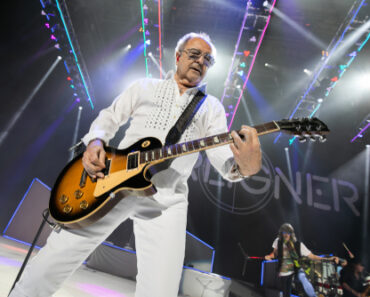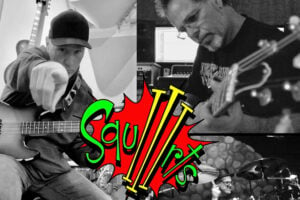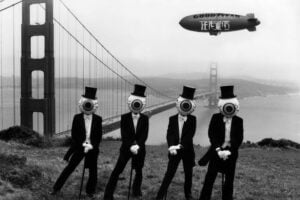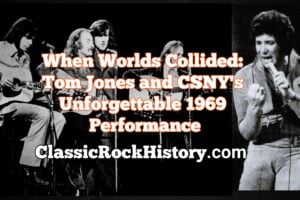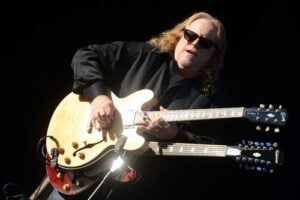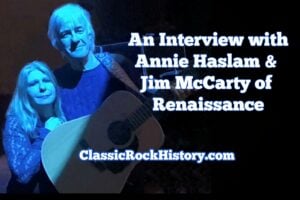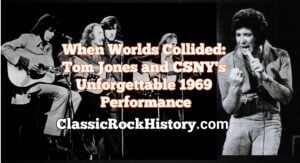
Feature Photo: CSNY CMA-Creative Management Associates/Atlantic Records, Public domain, via Wikimedia Commons/ Tom Jones London Records, Public domain, via Wikimedia Commons
I don’t know about you, but I always enjoy seeing artists from different sides of the musical spectrum getting together on stage and performing. It’s seems like it’s something that we actually need more today in many ways. The spirit of the 60s was all about harmony, and, of course, there was the other side, all about protests, anti-protests, and war. It was just a mess. But in 1969, a year when I was watching Lost in Space on TV as a young kid, there was some pretty spectacular music happening on television, and at times some very creative and original pairing of artists that people would think wouldn’t work, but actually did.
Tom Jones had already become one of the most recognizable voices in popular music when he invited Crosby, Stills, Nash and Young to appear on his BBC television series This Is Tom Jones in 1969. Known for his explosive stage presence and soulful delivery, Jones was a household name through hits like “It’s Not Unusual” and “Delilah.” On the other hand, Crosby, Stills, Nash and Young had just emerged from the countercultural wave of Woodstock and represented a new kind of rock idealism. The pairing seemed unlikely at first, yet it produced one of the most talked-about television performances of the decade.
The show aired on October 16, 1969, only weeks after Crosby, Stills, Nash and Young performed at Woodstock. For the broadcast, the supergroup joined Tom Jones onstage to perform “Long Time Gone,” a song written by David Crosby. At first glance, it looked like two musical worlds colliding. Jones was the polished pop star in a tailored suit, while the four members of CSNY brought the look and energy of the late sixties rock revolution. What happened next stunned viewers. Jones launched into the opening lines with full-throated conviction, while Stephen Stills, Graham Nash, David Crosby, and Neil Young provided tight harmonies and driving instrumentation behind him. The mix of Tom’s powerhouse soul and the group’s rich harmony made the song soar in unexpected ways.
Although some critics at the time saw the collaboration as strange, the chemistry on stage told another story. The performance captured an artist with deep roots in rhythm and blues stepping directly into the heart of the rock movement, matching the intensity of one of the era’s most revered vocal groups. Graham Nash’s harmonies and Stills’s guitar lines blended effortlessly with Jones’s energy, creating a performance that was raw, unplanned, and thrilling to watch. David Crosby would later recall the surreal experience, describing the Welsh singer as “a force of nature.” Despite the contrasting styles, there was mutual respect between them, and the live moment revealed how music could bridge very different artistic sensibilities.
For Tom Jones, the performance was another example of his fearlessness as an entertainer. He had built a reputation for welcoming artists of all backgrounds onto his show, from Janis Joplin to Stevie Wonder, and letting their sounds intersect with his. Crosby, Stills, Nash and Young, fresh off the success of their debut album, used the platform to reach a massive mainstream audience who might never have seen them outside the rock circuit. The moment was both spontaneous and historic, standing as a cultural snapshot of late-sixties television when variety shows could still take bold creative risks.
The performance of “Long Time Gone” has since been rediscovered by new generations of fans online. Clips of the show continue to circulate on music sites and social media, often drawing astonishment at how seamlessly the collaboration worked. It remains a reminder of how two musical worlds that seemed incompatible could come together and create something unforgettable. The raw energy of Jones’s vocals and the harmonic brilliance of Crosby, Stills, Nash and Young merged into a singular moment that still fascinates rock historians more than fifty years later.
What makes the story so enduring is that it captured more than just a song. It symbolized the connection between the structured world of televised pop and the rebellious spirit of late sixties rock. Neither artist compromised their sound, and both came away with renewed artistic credibility. For Tom Jones, it confirmed that his range and instincts as a performer transcended genres. For Crosby, Stills, Nash and Young, it proved that their message and harmonies could thrive beyond the festival stage.
Over the years, I have gotten a lot of flak for putting artists on this site that people don’t always necessarily believe belong on a Classic Rock site. I do it for two reasons, first is simple, I like all music, so I’m going to write about all music, it’s my site, I can do whatever the heck I want. But the second is the more important one. As a historian, I’ve always been trained to make connections. That’s what we do here, we make connections between all types of music. Music that came before the classic rock era, music that came after the classic rock era, and music that was happening during the classic rock era, that was both inspired by and inspired the sound of 60s, 70s, 80s, and 90s rock and beyond. That’s what this site is all about, and will always be about.
If you have never seen this before, I highly recommend that you check it out.
Check out similar articles on ClassicRockHistory.com Just click on any of the links below……
10 Most Rocking Crosby, Stills, Nash & Young Songs
Complete List Of Crosby, Stills & Nash Albums And Songs
Top 10 Crosby, Stills & Nash Songs
Top 10 Crosby, Stills, Nash & Young Songs
Complete List Of Crosby, Stills, Nash & Young Albums
10 Essential Stephen Stills Songs In Chronological Order
10 Essential David Crosby Songs
Top 10 Graham Nash Songs
Complete List Of Stephen Stills Albums And Songs
Complete List Of Crosby & Nash Albums And Discography
Complete List Of Neil Young Albums And Discography
Top 10 Neil Young Songs
Top 10 Tom Jones Songs
Read More: Artists’ Interviews Directory At ClassicRockHistory.com
Read More: Classic Rock Bands List And Directory
When Worlds Collided: Tom Jones and CSNY’s Unforgettable 1969 Performance article published on ClassicRockHistory.com© 2025
Classicrockhistory.com claims ownership of all its original content and Intellectual property under United States Copyright laws and those of all other foreign countries. No one person, business, or organization is allowed to re-publish any of our original content anywhere on the web or in print without our permission. All photos used are either public domain Creative Commons photos or licensed officially from Shutterstock under license with ClassicRockHistory.com. All photo credits have been placed at the end of the article. Album Cover Photos are affiliate links and the property of Amazon and are stored on the Amazon server. Any theft of our content will be met with swift legal action against the infringing websites.


